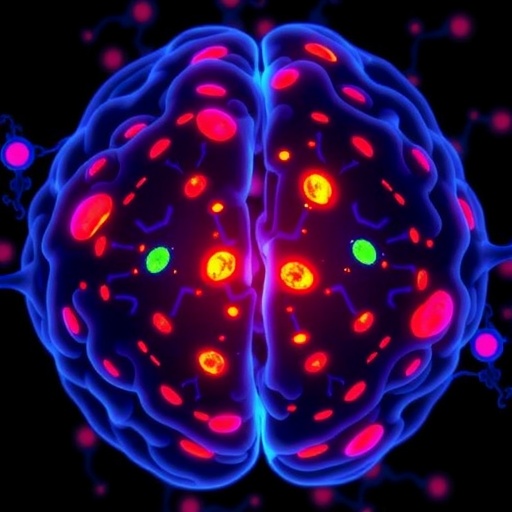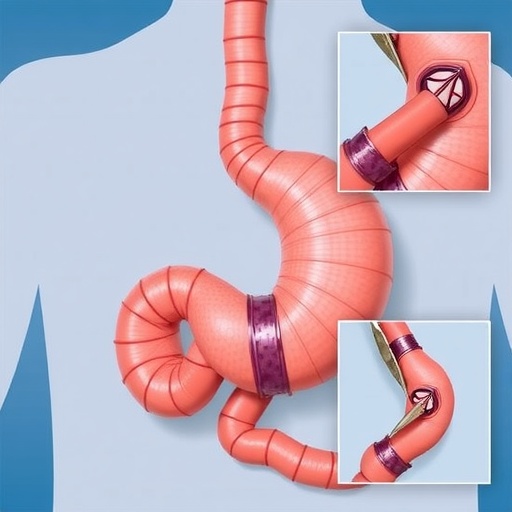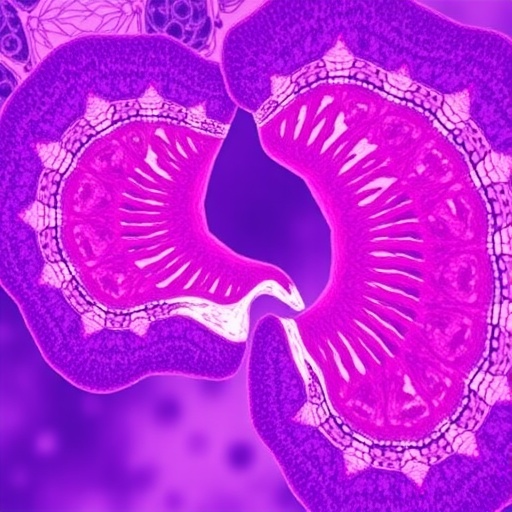Drug Resistance in Glioblastoma Stem Cells: Unraveling the Molecular Complexity Behind Therapy Evasion
Glioblastoma (GBM), the most aggressive form of primary brain tumor, continues to challenge clinicians and researchers alike due to its notorious ability to evade conventional treatments. At the heart of this resilience lie glioblastoma stem cells (GSCs), a subpopulation of cancer cells endowed with stem-like properties and a formidable capacity for drug resistance. A groundbreaking new study has delved deep into the molecular underpinnings of this drug resistance, revealing an intricate network of genetic, epigenetic, and functional adaptations that allow these cells to survive even the most aggressive therapies.
In a comprehensive analysis published recently in BMC Cancer, researchers conducted one of the most extensive multi-modal investigations into the mechanisms driving drug resistance across a spectrum of therapeutic agents rather than limiting themselves to single-drug resistance. By screening 32 patient-derived GSC cultures against a broad panel of approximately 500 anticancer drugs, the study distinguished five highly drug-resistant cultures from four that remained drug-sensitive. This selection provided a unique opportunity to map the molecular signatures that distinguish resistant GSCs from their more vulnerable counterparts.
A key revelation of the study was the consistent upregulation of ATP-binding cassette (ABC) transporters—a family of proteins known to mediate drug efflux—across all drug-resistant GSC cultures. By actively pumping therapeutic agents out of the cells, ABC transporters effectively reduce intracellular drug accumulation, rendering treatments less effective. This molecular adaptation underscores the cells’ sophisticated defense mechanisms to counteract chemotherapeutic assault.
However, the study went far beyond transporter expression, incorporating detailed profiling of stemness markers and extracellular matrix (ECM)-related gene expression. Researchers observed a striking enrichment of stemness signatures in drug-resistant GSCs, indicative of enhanced plasticity and self-renewal potential. This heightened stem-like state corresponds with a reduced capacity of these cells to differentiate, enabling them to maintain their malignant capabilities and adapt swiftly to environmental pressures, including drug exposure.
Further complexity emerged in the epigenetic landscape of resistant cells. Notably, genes implicated in axonogenesis exhibited significant CpG island hypomethylation. DNA methylation typically represses gene expression, and hypomethylation in these regions hints at deregulated gene activation within pathways involved in neural development. The aberrant activation of such genes may contribute to the plasticity and invasive characteristics characteristic of resistant GSCs.
The extracellular matrix, long known to influence cancer behavior, also plays a pivotal role in drug resistance. Drug-resistant GSCs consistently overexpressed ECM-related genes, suggesting the creation of a protective microenvironment that facilitates evasion from therapeutic agents. The ECM can act as both a physical barrier to drug penetration and a modulator of cell signaling pathways that promote survival, underscoring its dual significance in therapy resistance.
These findings illuminate the dynamic and adaptive nature of glioblastoma stem cells. Drug resistance in GBM is not merely a consequence of single mutations or disrupted pathways; rather, it arises from a coordinated plastic response involving drug efflux, maintenance of stemness, epigenetic remodeling, and microenvironmental interactions. This multifaceted adaptability enables GSCs to withstand diverse treatment modalities, rendering them formidable targets for current therapies.
Importantly, the implications of the study push the boundaries of personalized medicine in GBM. By profiling patient-derived GSC cultures at multiple molecular levels, the research offers a blueprint for identifying biomarkers predictive of drug resistance and highlights potential new therapeutic targets. For instance, inhibition of ABC transporters, modulation of epigenetic regulators, or disruption of ECM interactions could sensitize resistant GSCs to treatment.
Moreover, the observation that drug resistance correlates with decreased differentiation capacity emphasizes the need to explore differentiation-inducing agents as adjunct therapies. Encouraging GSCs to lose their stem-like properties may render them more susceptible to conventional drugs and immune-mediated clearance, providing a potential avenue to circumvent resistance.
This multi-dimensional molecular dissection also stresses the limitation of conventional single-pathway targeting strategies. The redundancy and plasticity of resistance mechanisms necessitate combination therapies that simultaneously attack multiple vulnerabilities within the tumor. Such integrative therapeutic regimens could prevent GSCs from dynamically adapting and escaping eradication.
The role of ECM overexpression raises intriguing possibilities about the tumor niche’s contribution to resistance. Therapeutic strategies aimed at remodeling or targeting the ECM might enhance drug penetration and disrupt pro-survival signaling cues, thereby increasing the effectiveness of current treatment options.
Epigenetic alterations, especially hypomethylation of axonogenesis-related genes, add another layer of complexity and therapeutic opportunity. Agents targeting the epigenome—such as DNA methyltransferase inhibitors or histone deacetylase inhibitors—could potentially reverse aberrant gene expression patterns and impair the survival advantage of resistant GSCs.
Fundamentally, the study’s integration of gene expression, mutation profiling, DNA methylation analysis, and functional assays exemplifies the potential of systems biology in understanding cancer resistance. Such comprehensive approaches are critical to unravel the intricate networks that sustain malignant phenotypes and will be instrumental in guiding the next generation of GBM therapies.
As GBM remains a lethal diagnosis with limited treatment options, these insights offer a beacon of hope. By elucidating the molecular architecture of drug resistance in glioblastoma stem cells, the research paves the way for innovative, targeted interventions capable of overcoming one of oncology’s toughest challenges.
In conclusion, this landmark study establishes a new paradigm in GBM research. It highlights how glioblastoma stem cells harness stemness, evade drugs via transporters and the extracellular matrix, and remodel their epigenetic landscape to survive. Realizing the therapeutic potential of these findings will require concerted translational efforts to design and test multi-faceted treatment strategies. Nevertheless, the comprehensive molecular understanding provided here constitutes a formidable step towards more effective and durable GBM therapies.
Subject of Research:
Drug resistance mechanisms in glioblastoma stem cells, focusing on stemness signatures and extracellular matrix overexpression.
Article Title:
Drug resistant glioblastoma stem cells exhibit enriched stemness signatures and share extracellular matrix overexpression.
Article References:
Estabillo, L.L., Skaga, E., Halldorsson, S. et al. Drug resistant glioblastoma stem cells exhibit enriched stemness signatures and share extracellular matrix overexpression. BMC Cancer 25, 1655 (2025). https://doi.org/10.1186/s12885-025-15163-z
Image Credits: Scienmag.com
DOI: https://doi.org/10.1186/s12885-025-15163-z
Tags: ABC transporters in glioblastomaaggressive brain tumor treatment strategiesdrug-resistant glioblastoma stem cellsepigenetic factors in cancer resistancegenetic adaptations in glioblastomaglioblastoma therapy challengesmapping molecular signatures in cancermolecular mechanisms of drug resistancemulti-modal drug resistance investigationpatient-derived glioblastoma culturesstem-like properties of cancer cellstherapeutic evasion in brain tumors





